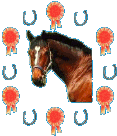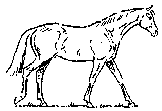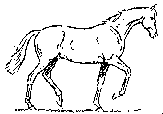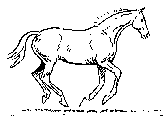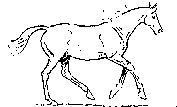HORSE CLUB ONLINE |
KNOW YOUR PACES |
| General Sales | Riding Schools | Horse Services | Lost & Found | Wanted |
|
|
Know Your Paces
|
Where To Canter No mater how much you enjoy cantering, remember the horse's well-being. The canter should only be attempted on suitable ground, otherwise the horse's legs will be jarred. Soft ground is best and you must never canter on a road surface. Watch Other People It always helps to watch other people riding in canter and to notice how the horse's legs move. Just watch the two front legs to begin with. It is quite easy to see the inside foreleg going ahead of the outside foreleg. Horses loose in a paddock naturally canter on the correct leg, changing lead whenever they change direction. If they don't change lead, they generally break into a trot for a few strides when making a turn. Getting The Rhythm Once you are used to the rhythm, cantering is more comfortable than trotting. Not many people can run fast enough to lead you for your first canter, which also makes it much more exciting than the first trot.
|
|
|||||
